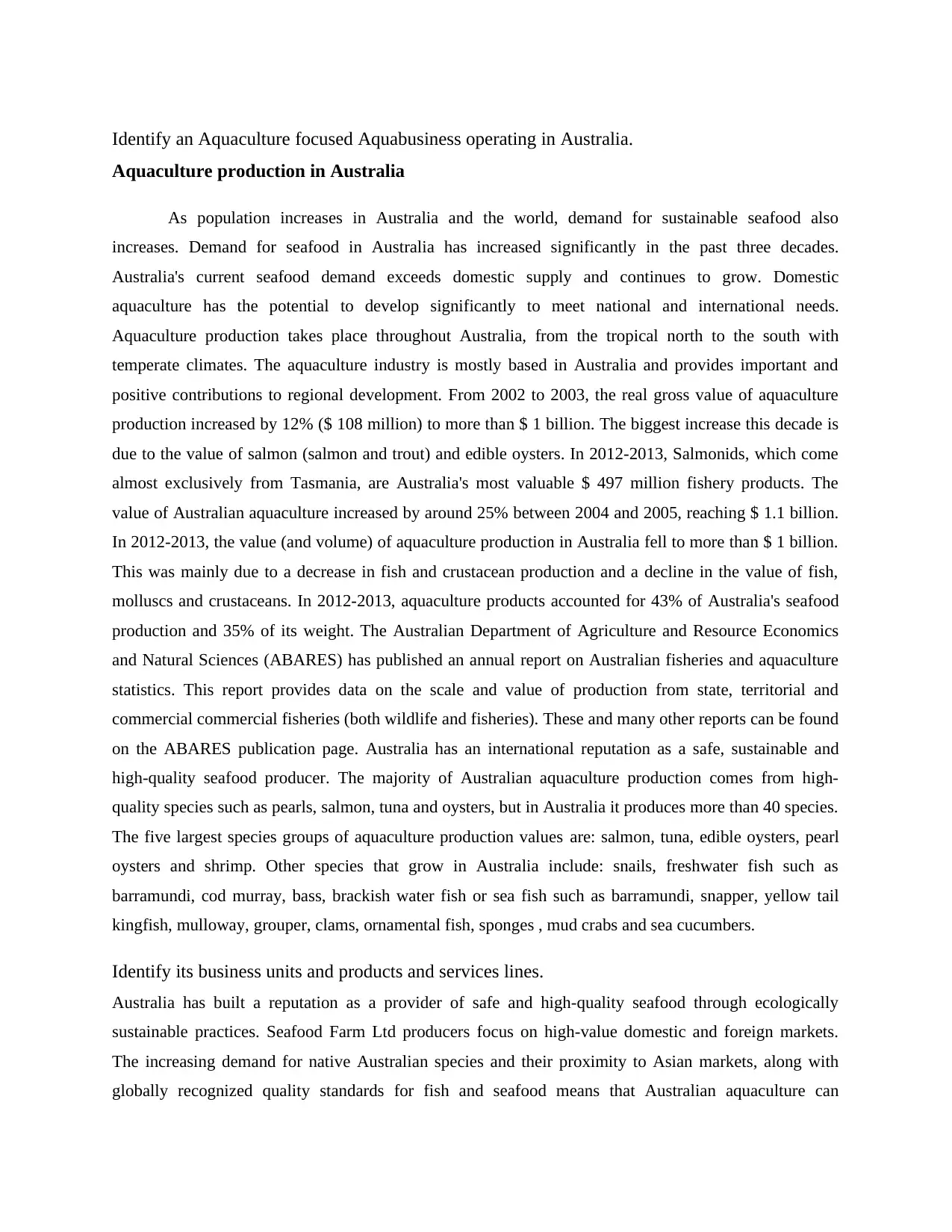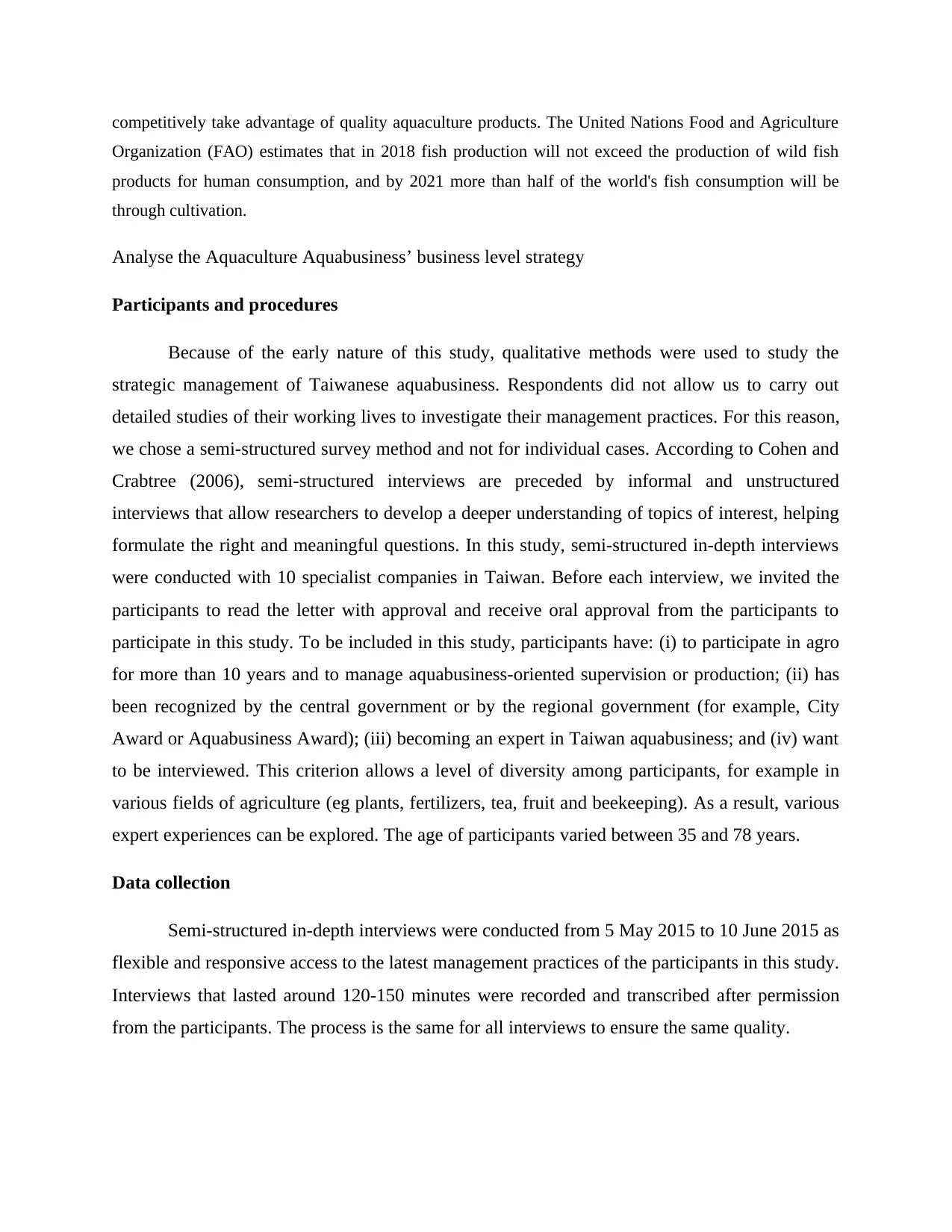Report: Analysis of an Australian Aquaculture Focused Aquabusiness
VerifiedAdded on 2021/02/22
|2
|918
|77
Report
AI Summary
This report focuses on identifying and analyzing an aquaculture-focused aquabusiness operating in Australia. It begins by highlighting the increasing demand for sustainable seafood and the potential of domestic aquaculture to meet both national and international needs. The report then delves into the Australian aquaculture industry, its significant contributions to regional development, and the key species produced, including salmon, tuna, oysters, and shrimp. The analysis further identifies the business units, product and service lines of a selected Australian aquaculture company. Finally, the report examines the business-level strategy employed by the chosen aquabusiness, including the participants and procedures used for strategic management based on qualitative methods. This includes the use of semi-structured interviews with industry experts to understand their management practices and strategic decisions within the context of the Taiwanese aquabusiness landscape. The report also describes the data collection process, including the interview duration, recording, and transcription methods.
1 out of 2





![[object Object]](/_next/static/media/star-bottom.7253800d.svg)